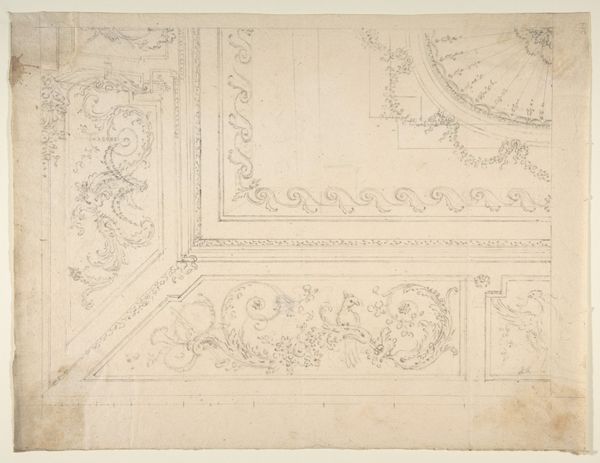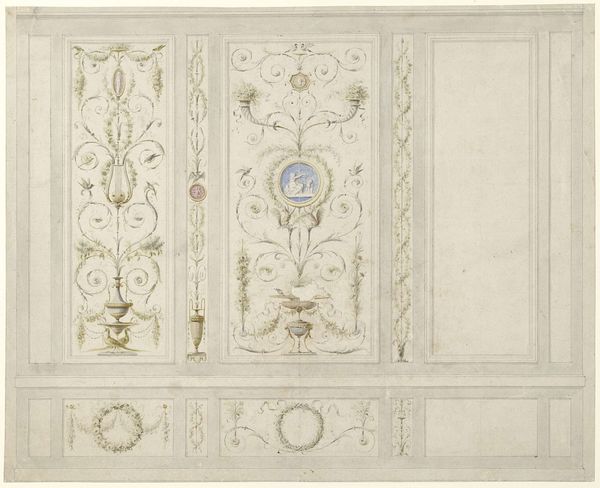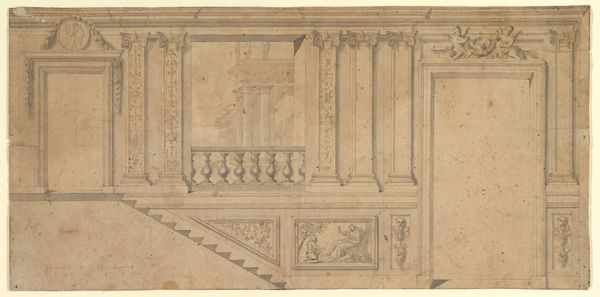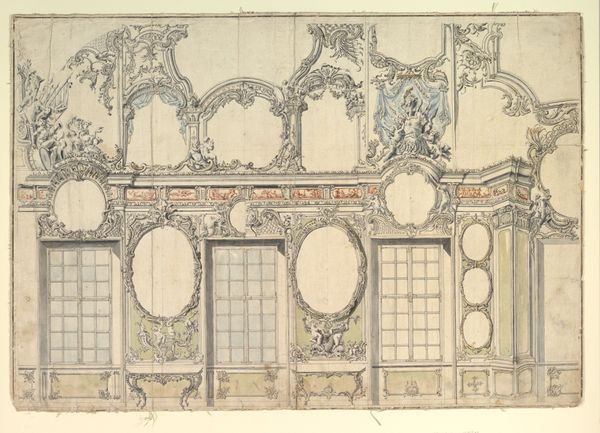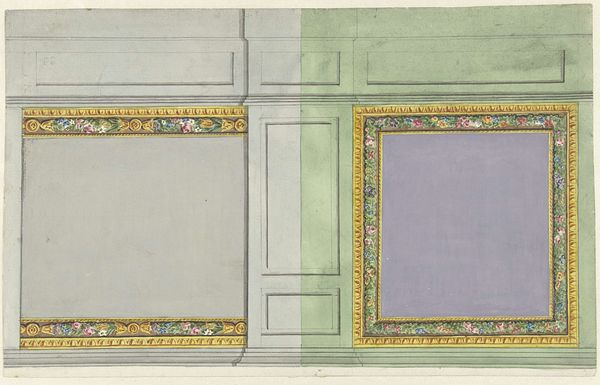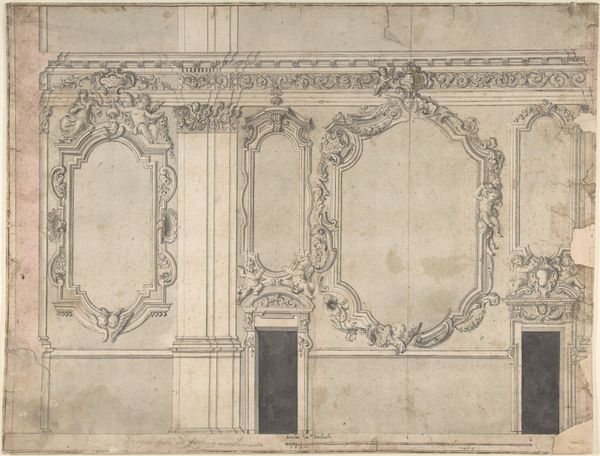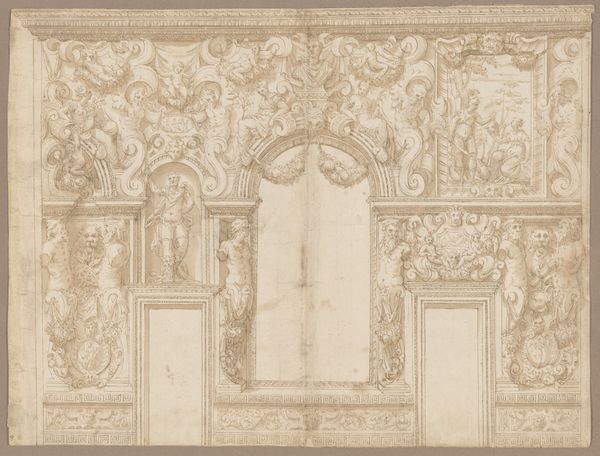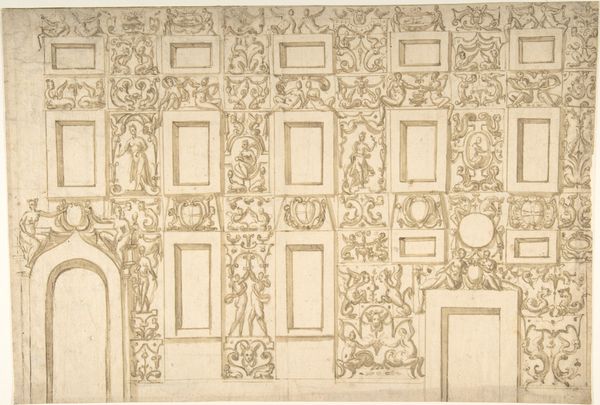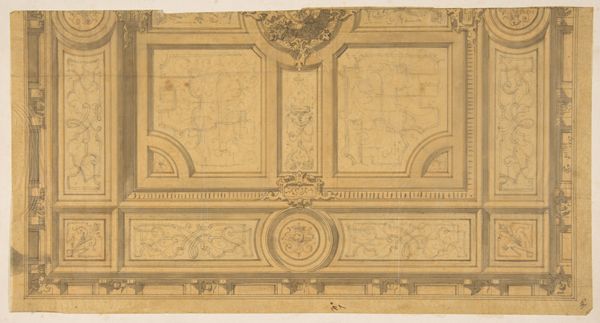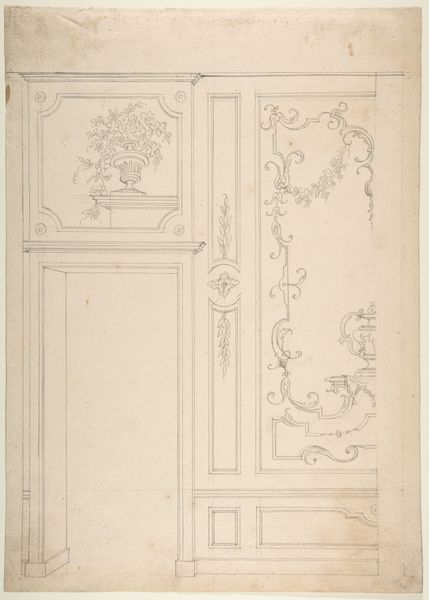
Nine Miscellaneous Designs for the de la Rochejaqulein Family 1850 - 1900
0:00
0:00
drawing, print
#
drawing
# print
#
geometric
#
decorative-art
Dimensions: 12 1/4 x 18 3/4 in. (31.1 x 47.6 cm)
Copyright: Public Domain
Editor: This drawing, "Nine Miscellaneous Designs for the de la Rochejaqulein Family," made between 1850 and 1900, consists of, well, nine different decorative ideas, mostly geometric. I find the overall effect pretty formal. How do you interpret this work? Curator: I see these designs as echoes of a very particular social order, particularly how the decorative arts are often commissioned and enjoyed by privileged, elite circles. The de la Rochejaqulein family were French aristocrats, right? This sheet reveals their desire to align their family's identity with emblems of status. The designs employ symbolic representation. I wonder, how does this compilation of patterns and crests engage with contemporary conversations about class and power? Editor: That makes a lot of sense! I was mostly seeing it on a purely visual level, the symmetry and details... but framing it as a representation of class… So, the patterns were like signals? Curator: Precisely. Consider how such patterns contribute to a visual language that reinforces social hierarchies. Even the geometric shapes are intentional! For whom was this visual language designed to impress and whom was it designed to exclude? What is lost when we consider the elite commissioning families, as opposed to the skilled but often anonymous draftsmen who gave these designs form? Editor: Thinking about the designs as social communication shifts my understanding. It's no longer just pretty ornamentation, but a statement. Curator: Exactly. By interrogating these designs through lenses of identity and class, we uncover their function in negotiating social space, past and present. Editor: I will certainly see all decorative arts differently from now on. Curator: And I, your willingness to probe beyond surface appearances is indeed valuable.
Comments
No comments
Be the first to comment and join the conversation on the ultimate creative platform.

